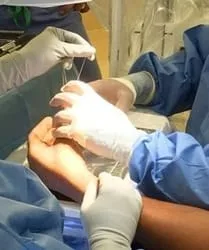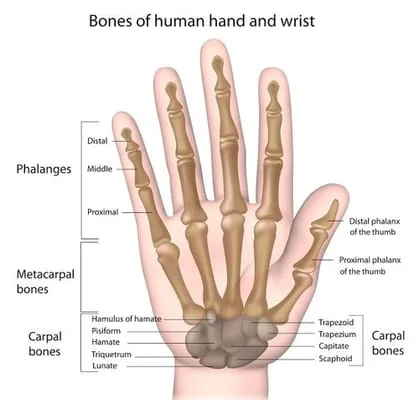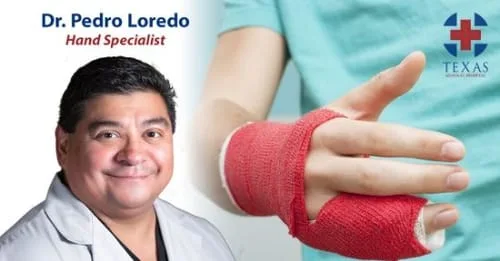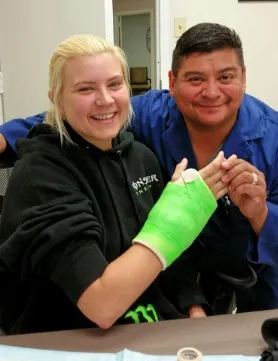
Dr. Pedro Loredo is a hand care specialist serving the Dallas and Fort Worth, TX area. Call today to learn about treatment options for your fractured hand.
What are Fractures of the Hand and Fingers?
Our wrists, hands, and fingers have many small bones which are very vulnerable to fractures. There are two types of hand/finger fractures: simple and complex. A simple fracture is able to heal without surgical intervention through the use of splints and casts, while a complex fracture requires surgery to place pins, screws, plates, and/or wires which help the bone(s) to heal properly.
The types of fractures which Dr. Loredo sees most frequently include:

- Scaphoid fractures - The scaphoid is a bone in the wrist and fractures are frequently the result of attempting to stop a fall with an outstretched hand.
- Metacarpal fractures - The metacarpals are the long bones in the palm and can be fractured along many points, including the base, shaft, neck, and head.
- Phalanges fractures - The phalanges are the small bones in the fingers.
- Wrist fractures - Other types of wrist fractures (besides a scaphoid fracture) usually involve the radius bone.
Symptoms of Fractures of the Hand and Fingers
Symptoms of Fractures of the Hand and Fingers include the following:
- Pain in the hand/finger(s)
- A visible deformity
- Swelling
- Bruising
- Numbness or a tingling sensation
- Loss of function in the affected hand/finger(s)

Dr. Loredo’s Approach to Treating Fractures of the Hand and Fingers
Dr. Loredo will evaluate the fracture. If it is a simple fracture, meaning it is able to heal without surgical intervention, Dr. Loredo will place a splint or cast to provide support for the fracture and allow it to heal on its own. A complex fracture is more serious and requires surgery to place pins, screws, plates, and/or wires which help the bone(s) to heal properly. The goal of any procedure is to try and restore as much mobility and strength to the hand or finger as possible.
What Can I Expect After Surgery?
The recovery period depends on the severity of the fracture; however, patients can anticipate wearing their splint or cast for approximately 6 to 8 weeks to allow for complete healing of the bone for both simple and complex fractures.
Frequently Asked Questions
Are certain people at higher risk for Fractures of the Hand and Fingers?
Fractures of the Hand and Fingers can happen to anyone at any age - men, women, and children. However, people who suffer from osteoporosis, a condition which causes a decrease in the density of the bone with age, are at higher risk for fractures due to the fragility of their bones. Additionally, athletes tend to have higher rates of fracture than non-athletes.
Can Fractures of the Hand and Fingers increase risk of developing osteoarthritis?
In some cases, yes. If the bone fails to heal properly (called non-union), arthritis can more easily develop in these areas.
Isn’t a fractured finger just a minor injury?
Although the bones in the fingers are small, fracturing one of them is NOT a minor injury. The fracture must be treated by a doctor to ensure proper healing. The bones in the hands and fingers line up exactly in order to allow you to perform specialized functions and manipulate objects. If you fail to seek treatment for a broken finger, you may have alignment issues as well as chronic stiffness and pain. In most cases, a doctor can put your broken bone back into place without resorting to surgery using a splint or cast.
Featured Story - Lauren, Hand Fracture Patient

Contact the Loredo Hand Care Institute
If you are experiencing any of the symptoms associated with Fractures of the Hand and Fingers or would like to learn more about our practice in the Dallas area, please contact us today to schedule an appointment or to get a free insurance check.
